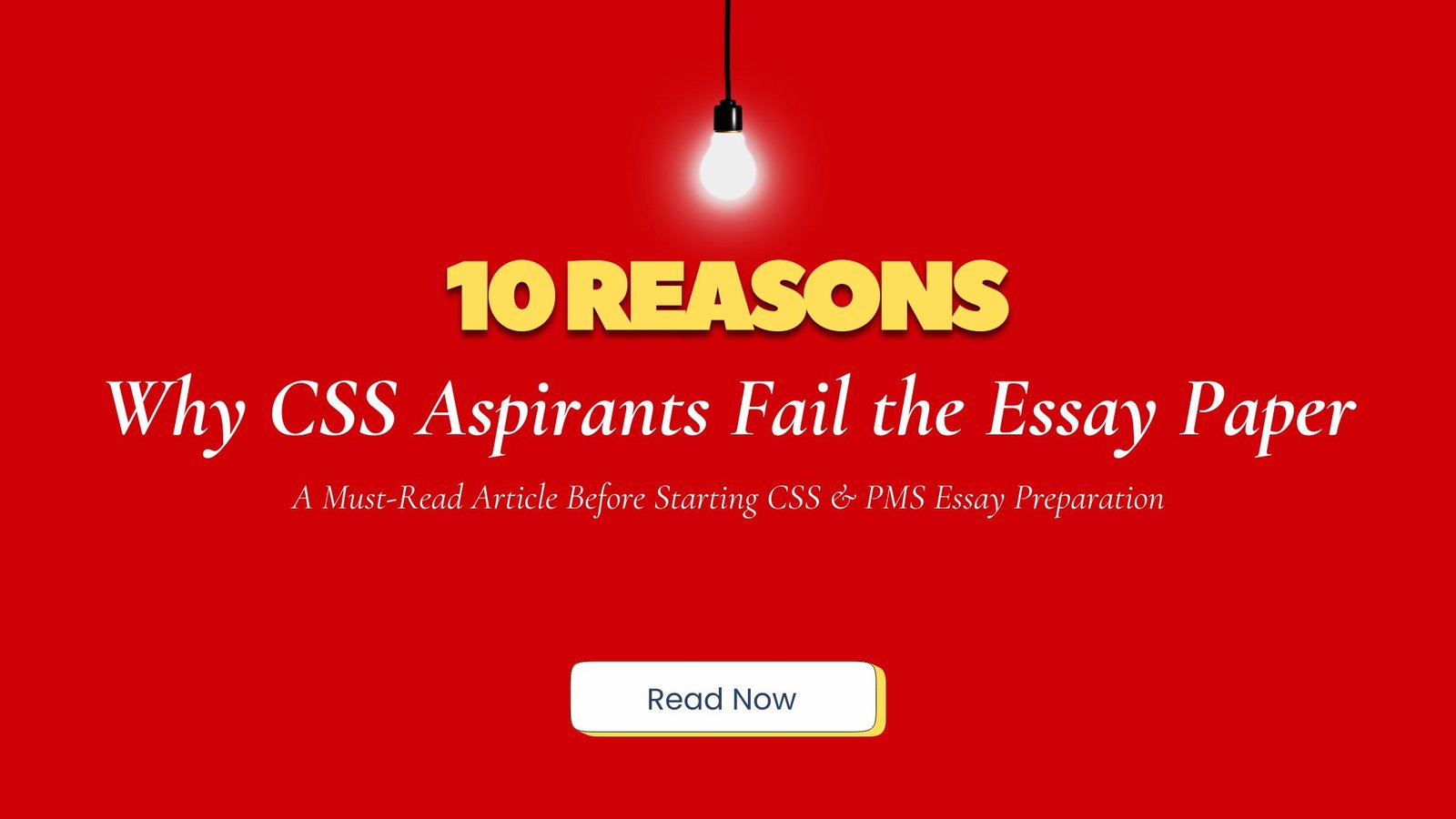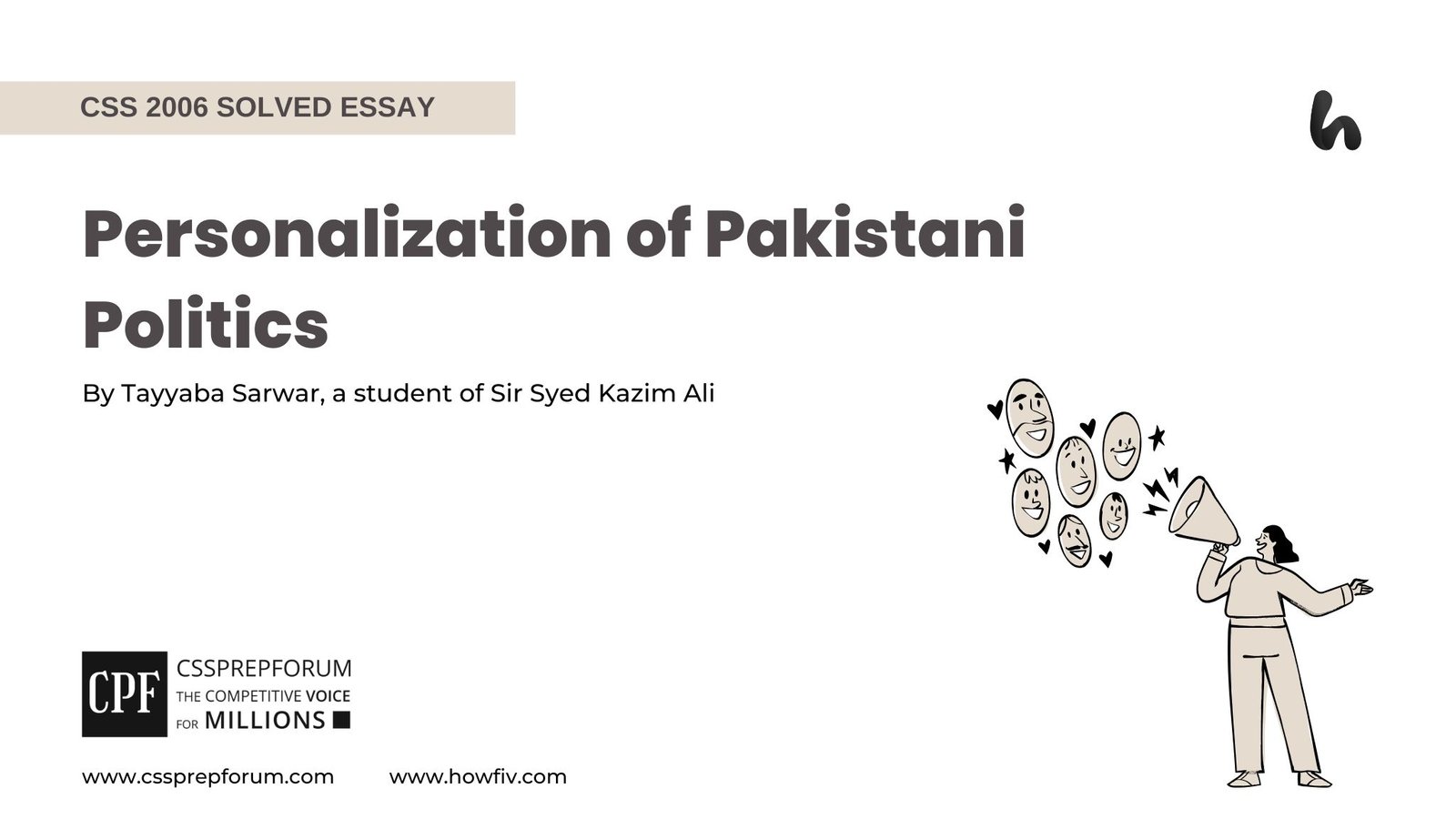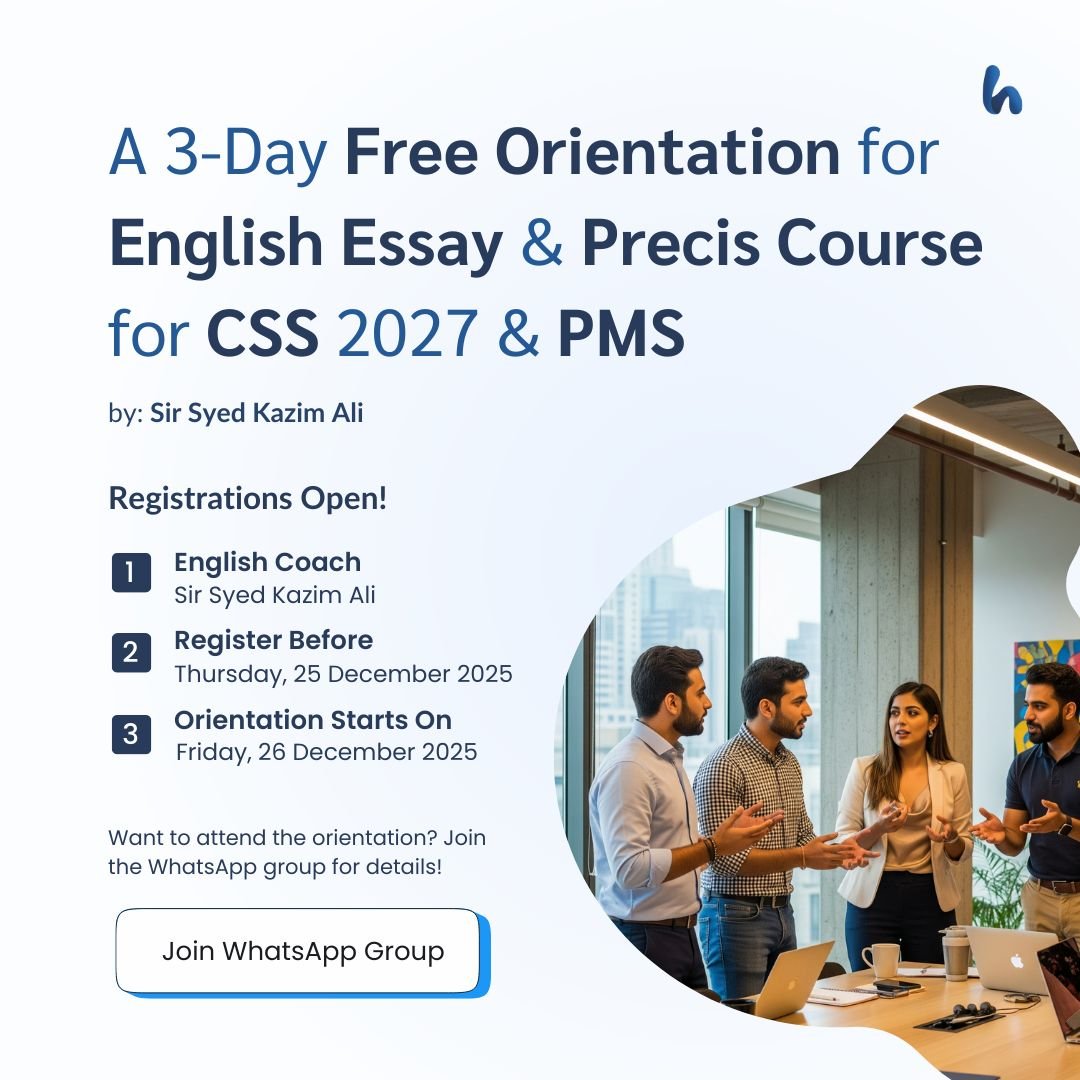CSS Islamiat | The Treaty of Hudaybiyyah as a Strategic Triumph
The following question is solved by Miss Ayesha Irfan, the highest scorer in CSS Islamiat. Moreover, the question is attempted using the same pattern taught by Sir Syed Kazim Ali to his students, who have scored the highest marks in compulsory subjects for years. This solved past paper question is uploaded to help aspirants understand how to crack a topic or question, write relevantly, what coherence is, and how to include and connect ideas, opinions, and suggestions to score the maximum.

Introduction
The Treaty of Hudaybiyyah, signed in 6 AH (628 CE), stands as one of the most pivotal events in the early history of Islam. Though it appeared to be a setback for Muslims at the time, it later proved to be a strategic victory that demonstrated the Prophet Muhammad’s (PBUH) farsightedness in diplomacy, patience, and peace-building. This treaty laid the groundwork for the spread of Islam across Arabia and showed that negotiation could be more effective than confrontation.
Historical background of the Treaty of Hudaybiyyah
After years of persecution in Makkah, the Prophet Muhammad (PBUH) and his companions migrated to Madinah in 622 CE (Hijrah). From Madinah, the Muslims began to establish their own independent community, leading to rising tensions and open conflict with the Quraysh of Makkah. These hostilities included major battles such as
- Battle of Badr (624 CE / 2 AH): A decisive victory for the Muslims.
- Battle of Uhud (625 CE / 3 AH): A setback for Muslims due to a tactical error.
- Battle of the Trench (627 CE / 5 AH): A failed siege of Madinah by Quraysh and allied tribes, effectively ending their military offensives.
Following these conflicts, the Prophet (PBUH) saw an opportunity for peaceful engagement. He had a vision that he and his companions would enter the Sacred Mosque in Makkah. Motivated by this vision, and seeking to perform the pilgrimage (Umrah), he set out with approximately 1,400 companions in a state of Ihram (ritual purity) towards Makkah, signifying peaceful intentions.
Causes Leading to the Treaty
- Religious Motivation: The primary cause was the Prophet’s (PBUH) desire to perform Umrah, which was a fundamental religious act. The Muslims approached Makkah not as warriors but as pilgrims, which made their cause just and sacred.
- Desire for Peace: After years of conflict, there was a mutual weariness of war. The Muslims, having defended themselves successfully, were ready to explore peace. The Quraysh, too, had suffered losses and political instability and were open to a truce to maintain their status.
- Strategic Diplomacy: The Prophet (PBUH) wanted to assert the Muslims’ right to religious freedom and to establish Madinah as a legitimate power through peaceful means.
- Expanding Influence: Islam was growing in influence. A peace treaty would allow free movement, interaction, and preaching of Islam without the looming threat of Quraysh aggression.
- Quraysh’s Political Dilemma: Allowing the Muslims into Makkah would be seen as a victory for the Prophet (PBUH), but rejecting them could portray the Quraysh as intolerant violators of Arabian customs regarding pilgrimage.
The Event at Hudaybiyyah
When the Muslims camped at Hudaybiyyah, just outside Makkah, the Quraysh sent several envoys to prevent their entry. Eventually, Suhail ibn Amr was sent as the chief negotiator, and after long discussions, a treaty was drafted.
Main Clauses of the Treaty of Hudaybiyyah: Detailed Analysis
The Treaty of Hudaybiyyah, though seemingly unfavourable to the Muslims at first glance, contained clauses that reflected the strategic brilliance of the Prophet Muhammad PBUH and laid the foundation for the eventual triumph of Islam. Below are the main clauses of the treaty, explained in depth:
1. Ten-Year Truce Between Quraysh and Muslims
Clause:
There would be no fighting between the two parties for ten years, and both sides would live in peace and security.
Explanation & Significance:
- This clause provided much-needed peace and stability after years of hostility and warfare.
- It allowed the Muslims to consolidate their power in Madinah, spread the message of Islam peacefully, and engage in socio-political relations with other tribes.
- The Quraysh’s agreement to this clause marked the first formal recognition of the Muslim state in Madinah, which was a major diplomatic victory.
- During the peace period, Islam spread faster than during the years of war, as tribes were now free to engage with Muslims without fear of Qurayshi reprisal.
2. Muslims Would Return to Madinah Without Performing Umrah That Year
Clause:
The Muslims would not enter Makkah that year but would be allowed to return the following year to perform Umrah, staying for three days only, and carrying no weapons except travel swords.
Explanation & Significance:
- Although disheartening to the companions at the time, this clause was a tactical move to avoid bloodshed and maintain the sanctity of the Haram.
- It affirmed the Muslims’ right to perform pilgrimage, which was historically and culturally a shared right in Arabia.
- This clause gave the Muslims the moral high ground as peaceful pilgrims were wrongfully denied access to Makkah, enhancing their religious and political legitimacy.
- The agreement to allow Umrah the following year served as a symbol of success, showing that Quraysh had finally recognised the Muslims’ religious rights.
3. Return of Refugees (Muslims) to Quraysh
Clause:
If anyone from Quraysh came to Madinah without permission from their guardian, they would be returned to Makkah. But if a Muslim left Madinah and went to Makkah, he would not be returned to the Muslims.
Explanation & Significance:
- At first glance, this seemed heavily biased against the Muslims and was a cause of emotional distress for many companions.
- However, the Prophet PBUH agreed to it, demonstrating patience and confidence in divine help.
- The case of Abu Jandal ibn Suhail, a Muslim returned under this clause during the treaty signing, was heartbreaking but showed the Prophet’s commitment to peace.
- Over time, the unfairness of this clause backfired on Quraysh. Escaped Muslim refugees who were returned formed a guerrilla group at Sayf al-Bahr, intercepting Quraysh caravans until Quraysh themselves requested that this clause be nullified.
4. Tribal Alliances Are Permitted
Clause:
Any tribe in Arabia could enter into an alliance with either Quraysh or the Muslims. Both parties would respect these alliances.
Explanation & Significance:
- This clause was strategically vital, as it allowed the Prophet PBUH to form broader coalitions.
- The tribe of Banu Khuza’ah allied with the Muslims, and Banu Bakr joined Quraysh.
- Two years later, Banu Bakr attacked Banu Khuza’ah (a violation of the treaty), which gave the Muslims a justified reason to march on Makkah.
- This clause thus played a key role in the Conquest of Makkah in 8 AH, which was nearly bloodless and widely welcomed.
5. No Secret Alliance or Hostility Allowed
Clause (implied in the agreement):
Both parties would refrain from forming secret alliances with the enemies of the other party or engaging in hostile actions that could reignite conflict.
Explanation & Significance:
- This ensured a period of genuine peace, reducing suspicion and tension.
- It allowed Muslims to freely interact with Arabian tribes, which helped in the peaceful spread of Islam.
- It tested the sincerity of the Quraysh, which they eventually violated, proving their unreliability to the wider Arabian population.
Muslim Reaction and Wisdom of the Prophet PBUH
Many companions were disheartened by the treaty, especially the clause about returning Muslims to the Quraysh. Umar ibn al-Khattab (RA) openly expressed his frustration, thinking it was a humiliation. However, the Prophet Muhammad (PBUH) remained calm and emphasized the long-term benefit of peace.
Notably, Surah Al-Fath (48) was revealed shortly after, calling the treaty a “clear victory”:
“Indeed, We have given you a clear victory.”
— Qur’an, Surah Al-Fath (48:1)
Consequences and Strategic Gains
- Recognition of the Muslim State: The Quraysh, by signing the treaty, effectively recognized the Muslim community in Madinah as a legitimate state.
- Opportunity for Dawah (Preaching): The peace allowed Muslims to interact more with tribes and individuals. Islam spread more rapidly during this period than during wartime.
- Moral High Ground: The Muslims demonstrated their peaceful intentions and were seen as patient, law-abiding pilgrims wrongfully denied access.
- Converts from Makkah: Over time, many Quraysh, including prominent figures like Khalid ibn Walid and Amr ibn al-As, accepted Islam during this truce.
- Violation and Conquest: Two years later, the Quraysh violated the treaty by attacking an ally of the Muslims. This gave the Prophet (PBUH) a justified reason to march on Makkah, leading to the peaceful conquest of Makkah in 8 AH (630 CE).
Conclusion
The Treaty of Hudaybiyyah illustrates the profound wisdom, patience, and foresight of the Prophet Muhammad (PBUH). What seemed like a compromise turned out to be a masterstroke in diplomacy that shifted the course of Islamic history. It showed that strength does not only lie in military might but also in restraint, negotiation, and strategic patience. This treaty remains a timeless lesson in conflict resolution and peace-building in both religious and secular contexts.

Searching for CSS or PMS Solved Islamiat Past Papers?
Are you preparing for CSS or PMS and searching for solved Islamiat past papers, notes, books, PDFs, and MCQs? Explore them for free on Howtests and Cssprepforum. All content is fully solved and written by Miss Ayesha Irfan. For your convenience, the links are provided below. Simply click on any to start reading and preparing.












